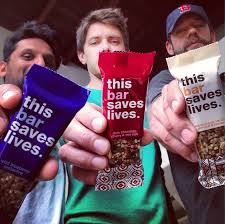Government Grants
Business Grants
Home Owner Programs
Federal Programs
About Us
Research Approaches to Improve the Care and Outcomes of
Purpose The overall purpose of this FOA is to identify and facilitate the provision of effective clinical care and needed educational/informational resources for people living with SB.
This FOA is comprised of three (3) components:
• Component A solicits applications to implement a
plan to develop and implement the infrastructure for Spina Bifida Clinical Care Monitoring and Tracking (CCMT).
The system will monitor, track and evaluate patterns of care provided in SB clinics with the goal of improving and standardizing care through evidence-based effectiveness analysis.
This plan will result in a CCMT that coordinates communication between SB clinics and SB chapters, provides input into research priorities for the NSBPR, and advocates for the adoption of best practices identified via the NSBPR and the UPPF as well as by other avenues.
• Component B solicits applications to continue the collection of longitudinal data on children and adults with SB.
These data will be used to promote quality of care by determining best practices through comparing differences in interventions and outcomes among clinics and to propose hypotheses to develop and test using NSBPR data.
• Component C solicits applications to implement and evaluate a best practice protocol that can move toward an evidence-based protocol to manage the urinary system in infants and young children with SB so that kidney function is preserved as a positive health outcome.
Applicants applying for this component of the FOA must also apply for component B.
Only applicants funded under Component B will be considered for funding under Component C.
This FOA is comprised of three (3) components:
• Component A solicits applications to implement a
plan to develop and implement the infrastructure for Spina Bifida Clinical Care Monitoring and Tracking (CCMT).
The system will monitor, track and evaluate patterns of care provided in SB clinics with the goal of improving and standardizing care through evidence-based effectiveness analysis.
This plan will result in a CCMT that coordinates communication between SB clinics and SB chapters, provides input into research priorities for the NSBPR, and advocates for the adoption of best practices identified via the NSBPR and the UPPF as well as by other avenues.
• Component B solicits applications to continue the collection of longitudinal data on children and adults with SB.
These data will be used to promote quality of care by determining best practices through comparing differences in interventions and outcomes among clinics and to propose hypotheses to develop and test using NSBPR data.
• Component C solicits applications to implement and evaluate a best practice protocol that can move toward an evidence-based protocol to manage the urinary system in infants and young children with SB so that kidney function is preserved as a positive health outcome.
Applicants applying for this component of the FOA must also apply for component B.
Only applicants funded under Component B will be considered for funding under Component C.
Related Programs
Rare Disorders: Research, Surveillance, Health Promotion, and Education
Department of Health and Human ServicesWho's Eligible
Obtain Full Opportunity Text:
Please click on Full Announcement at the top of this page
Additional Information of Eligibility:
Section III.
Eligibility Information 1.
Eligible Applicants Eligible Organizations Higher Education Institutions: • Public/State Controlled Institutions of Higher Education • Private Institutions of Higher Education The following types of Higher Education Institutions are always encouraged to apply for CDC support as Public or Private Institutions of Higher Education: • Hispanic-serving Institutions • Historically Black Colleges and Universities (HBCUs) • Tribally Controlled Colleges and Universities (TCCUs) • Alaska Native and Native Hawaiian Serving Institutions Nonprofits Other Than Institutions of Higher Education • Nonprofits (Other than Institutions of Higher Education) For- Profit Organizations • Small Businesses • For-Profit Organizations (Other than Small Businesses) Governments • State Governments • County Governments • City or Township Governments • Special District Governments • Indian/Native American Tribal Governments (Federally Recognized) • Indian/Native American Tribal Governments (Other than Federally Recognized) • Eligible Agencies of the Federal Government • U. S. Territory or Possession Other • Native American tribal organizations (other than Federally recognized tribal governments) • Faith-based or Community-based Organizations • Regional Organizations • Bona Fide Agents: a Bona Fide Agent is an agency/organization identified by the state as eligible to submit an application under the state eligibility in lieu of a state application.
If applying as a bona fide agent of a state or local government, a legal, binding agreement from the state or local government as documentation of the status is required.
Attach with "Other Attachment Forms" when submitting via www.grants.gov.
• Federally Funded Research and Development Centers (FFRDCs): FFRDCs are operated, managed, and/or administered by a university or consortium of universities, other not-for-profit or nonprofit organization, or an industrial firm, as an autonomous organization or as an identifiable separate operating unit of a parent organization.
A FFRDC meets some special long-term research or development need which cannot be met as effectively by an agency’s existing in-house or contractor resources.
FFRDC's enable agencies to use private sector resources to accomplish tasks that are integral to the mission and operation of the sponsoring agency.
For more information on FFRDCs, go to http://ecfr.gpoaccess.gov/cgi/t/text/text-idx?c=ecfr&sid=512ff78311f427c00454772dcf21523a&rgn=div8&view=text&node=48:1.0.1.6.34.0.1.18&idno=48
Full Opportunity Web Address:
Contact:
Agency Email Description:
Agency Email:
pgotim@cdc.gov
Date Posted:
2014-02-25
Application Due Date:
2014-03-12
Archive Date:
2014-04-11
Social Entrepreneurship
Spotlight
A Bar That Saves Children’s Lives

Ryan Devlin, Todd Grinnell and Ravi Patel have traveled to Africa on a humanitarian trip a few years back, encountering children suffering from severe malnutrition get healthy through Plumpy’Nut®.
